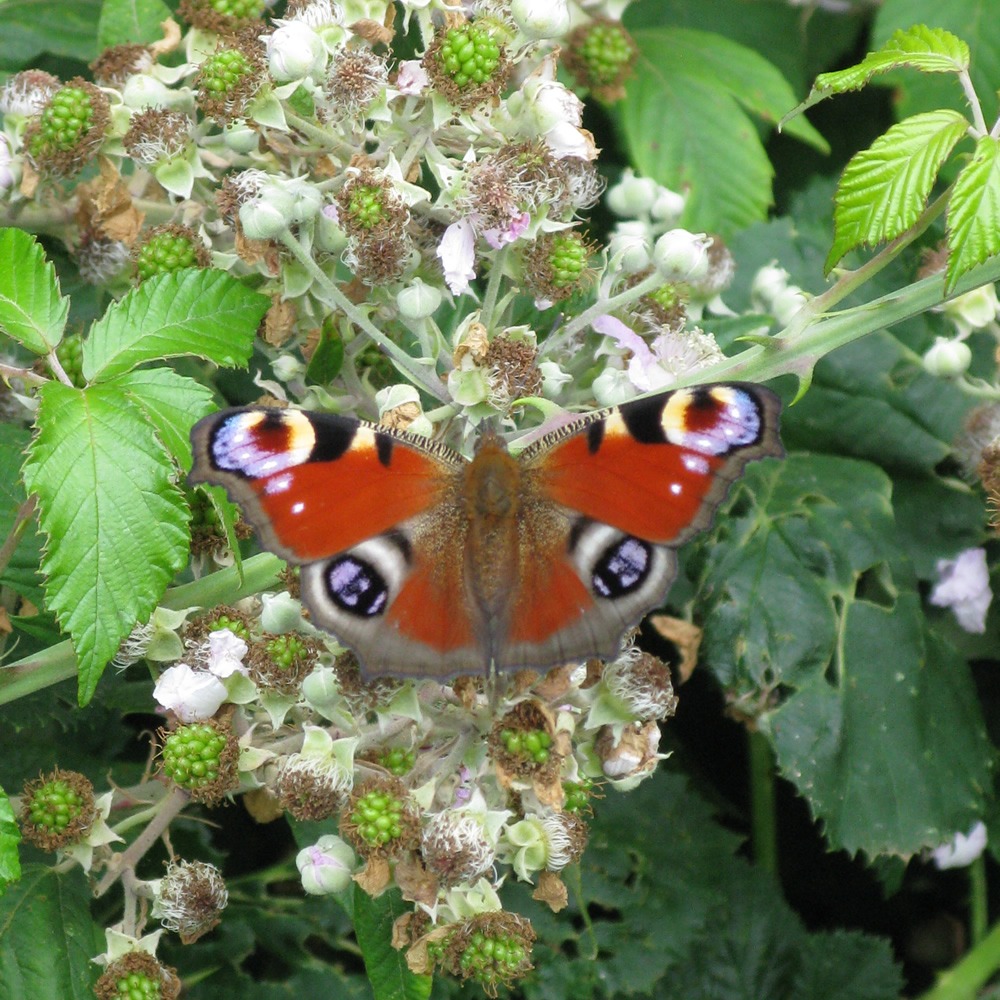Sunbury Park, part of a mosaic of green space in Spelthorne that allows wildlife to flourish, was originally part of the flood meadows of the River Thames. The Park was farmed for hundreds of years, evidenced by the drainage channels that run across the park and in the ha-ha that prevented grazing animals accessing the garden of Sunbury House which lay adjacent to Thames Street.
Today the park has extensive areas of grassland, scrub and woodland and is bounded by ancient walls, each of which has it’s own distinctive fauna and flora.
The grassland, the most extensive area in the park, has 17 or more grass species, a diversity that depends on its annual grazing or cutting in late summer. Cattle-grazing is ideal for this since cutting is expensive and seldom undertaken at the right time of year. Grasses and other common plants in the park , such as bacon-and-eggs, sorrel, bedstraw, trefoil, nettles and rose-bay willow-herb, are the food-plants of many insects, such as brimstone, peacock, comma, orange-tip, meadow brown, gatekeeper, holly blue and common blue butterflies. The Park’s Conservation Management Plan has identified six Nationally threatened, 11 rare and 47 uncommon insect species in the Park.
Consequently, the park is rich in birds, many of which rely upon the plants and insects for food. Thrushes, warblers, finches, sparrows, starlings and tits are all breed there. Several raptors have been seen in the area, including kestrel, hobby, sparrow-hawk, red kite, buzzard and tawny owl. Green and greater spotted woodpecker and nuthatch all nest in the woodland.
The Park’s tree flora is diverse with indigenous sessile oak, ash, lime, hawthorn and birch. Chestnut, Horse chestnut, Cedar of Lebanon, and four species of oak are not native. The cedars and horse chestnuts date from the late 18th or early 19th century but the sweet chestnuts are probably the oldest trees in the park. The large elms were killed by Dutch-elm disease in the 1970s but suckers, growing from the roots, survive until they reach about 5 m tall before the disease kills them.
The park is home to several animals, including foxes, hedgehogs, rats, mice, voles, frogs and toads, all feeding of the smaller wildlife.
The flora and fauna of the park are constantly changing with the seasons and through time. Grey squirrels are long established. Ring-necked parakeets and Egyptian geese are more recent arrivals. Triangular leek, alkanet and Spanish bluebells are colonising the marginal woodlands. Turkey oak and Holm oak are seeding into the grassland. Not all these changes are desirable and a good management regime is essential to maintain the park as an open area of interest.
Each season brings new arrivals and departures to the park. Swifts, swallows and house martins arrive in the spring to nest and feed off the insects on the river and in the park. Summer brings flowers to the meadowland. Autumn sees hobbies feeding their young before leaving to migrate to Africa. Winter brings fieldfares, redwings, blackbirds and robins from the north to the milder weather of Sunbury.
The future of the park depends upon its careful management. Cattle-grazing might be one element in securing its future. Sunbury’s residents justifiably treasure the park for its amenity value but should also be aware of its value to animals and plants that enhance the environment in which we live.

